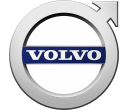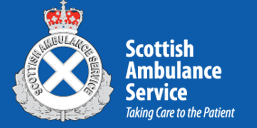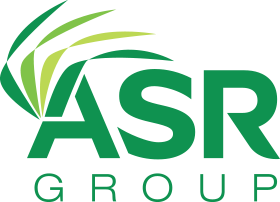USA
800 691 9120
UK
01225 704844
We use cookies on our website to analyze website usage and to help secure the website against misuse. Advertising and functional cookies are not used in our site or our web application products.
By clicking “Accept Essential Cookies Only”, you consent to us placing these cookies.
Companies need to maintain accurate records regarding their fixed assets. It is critical not only to maintain those records, but to do it in a way that can be used throughout the organization, is updated in a timely manner and can be customized to meet the specific needs of various departments.
Creating this collection of information on the entire fixed asset inventory involves establishing and maintaining a comprehensive, automated and customizable fixed asset management solution (FAM). However, as with most business practices knowing what processes are needed and putting them into practice are two different things. Use these key best practices to optimize your FAM implementation and operation.
Cloud solutions are now the preferred model for most companies.
Remote working requires adoption of remote-friendly asset management practices. Businesses are using mobile apps, collaboration tools, and remote monitoring solutions to track, maintain, and manage assets across distributed locations and remote work environments.
Organizations are incorporating environmental, social, and governance (ESG) factors into asset management practices. Companies are tracking and reporting on the environmental impact of their assets, implementing sustainable asset disposal practices, and aligning asset management strategies with corporate sustainability goals.
Regulatory requirements for financial reporting, tax compliance, and asset tracking have evolved, requiring businesses to stay abreast of changes in accounting standards, tax regulations, and industry-specific mandates. Compliance with regulations such as IFRS 16 and ASC 842 for lease accounting has become a focal point for many organizations.
We have added a section for "construction in progress" (CIP), since best practices in CIP are becoming increasingly important in large scale infrastructure projects.
Policies and procedures should be created to ensure consistent and correct accounting and management of fixed assets including:
In addition, the policies and practices should define key performance indicators which measure the success of your FAM activities, prioritize the most important items and define key measures which indicate that your FAM activities have reached maturity.

A company needs to have a defined set of criteria of what constitutes a fixed asset and what is an expense item. If a non-inventory asset is used for more than a year, it should be treated as an asset. However, it is often beneficial, and permissible, to allow expensing assets under a defined capitalization threshold. Such threshold should be carefully considered to avoid expensing assets which should be capitalized, resulting in a misstatement of the company’s financial statements. The company’s external auditors may be consulted on this decision prior to establishing the policy.
An asset should be depreciated as soon as it is ready for intended use and it must be assigned to the correct books and the correct depreciation formulae. In addition the type of the asset often determines the formula and life, so the asset has to be correctly classified. It is critical to track this information accurately and record it in your fixed asset tracking system. Key information that needs to be captured include:
Fixed Asset Management software makes the process more efficient. Avoid practices that rely on manual entry into a spreadsheet or stand-alone database which can be prone to errors. Select an asset management tool that track what you have in a central database which integrates to other systems containing asset information Fixed asset software solutions will automate key fixed asset processes including:
Having the fixed asset management system available on mobile devices can help with the accuracy of the data and the timeliness of the updates. Imagine in a large construction in progress project, if you could not update the asset records on-site, would there be a serious prospect of the data becoming inaccurate?
Keeping the system updated is key, and when an asset is moved, transferred, disposed of, assigned, or otherwise changed, the system should be updated immediately. Therefore it makes sense to have your entire workforce able to update the system when a change happens, even if the change needs approval.
With configurable asset management systems, it is possible to "infer" field values from other field values, and it is possible to validate field values against other fields using rules and scripts.
For example, if an asset is a Ford car, we know its model is going to fit with the predefined list of cars from ford, so we can autofill the model where the company has standardized on one model, and we can check that the model is not one from a different manufacturer.
Thats a very simple scenario, but xAssets customers include those managing lab equipment, shipping, complex networks and data centers, and government and defense contracts where very complex data inferencing and validation can be implemented, saving time and improving data quality and workflow integrity.
Cloud solutions are now the preferred model for most companies. While this potentially introduces new risks, the benefits of cloud solutions are now well understood and the risks are manageable. The benefits of cloud solutions include:
Measurement of performance can be relatively effortless if it is well supported by your fixed asset management software, so consider a toolset which allows automated KPI reporting.
The reports should include, but not necessarily limited to:
This is essential, especially if the organization has many fixed assets distributed across several in one or more locations. Clear labels will help with recording asset movements and asset inventories. Labelling methods include:
Barcoding and RFID solutions may not fit every need. The company needs to consider the merits of deploying a barcoding solution and evaluate the benefits of various alternatives. In all cases, the barcoding or RFID solution must integrate with the selected FAM solution.
xAssets has published a separate article about best practices in barcoding
Fixed assets should be periodically inventoried. This process will help identify:
The selected FAM solution should generate these reports on a scheduled or on-demand basis.
Fixed asset subledger/detailed records should be reconciled to the general ledger on a periodic basis. The fixed asset software solution should integrate with the firm’s accounting software. Reconciliations should include:
Such reconciliations should be reviewed and approved by a person independent of the reconciliation process.
Some assets require regular maintenance to retain their scheduled values or to ensure employee safety. The FAM solution should support requirements to report and provide scheduling notices for regular servicing activity for specified assets (automobiles, generators, HVAC, machinery, etc.)
Environmental sustainability has become a critical factor in organizational functions including fixed asset management. Businesses want to reduce their carbon footprint, reduce environmental impact, and meet sustainability goals, integrating environmental considerations into fixed asset management practices has become imperative.
Tracking and monitoring of the environmental impact associated with assets includes assessing factors such as energy consumption, greenhouse gas emissions, water usage, and waste generation throughout the lifecycle of assets. By measuring and reporting these environmental metrics, organizations can identify opportunities for improvement, optimize resource utilization, and minimize environmental harm.
One key consideration here is that although we can predict with some accuracy the data you will need to track to meet future regulations, those actual requirements will change over time. Therefore it is important to select a solution which can be easily configured to track new data tables and fields which may be more complex than simply text, numeric or dropdown fields. For example you might need to track logs of environmental events related to oil spills, so a table of data attached to an asset would be required to represent all data associated with each event.
Evaluate suppliers based on their environmental performance, ethical sourcing practices, and adherence to sustainability standards. By prioritizing vendors with eco-friendly products and sustainable supply chains, organizations can minimize the environmental footprint of their asset acquisitions and support sustainable business practices throughout the value chain.
Organizations should implement environmentally sound disposal practices, such as recycling, refurbishment, or donation of assets.
Conducting lifecycle analysis (LCA) of assets can help organizations identify opportunities to reduce their carbon footprint and environmental impact. By analyzing the environmental consequences of asset production, operation, and disposal, businesses can identify areas for improvement and implement strategies to minimize resource consumption, emissions, and waste throughout the asset lifecycle. This may include investing in energy-efficient assets, implementing renewable energy solutions, or optimizing asset utilization to reduce overall environmental impact.
Integrating environmental sustainability considerations into fixed asset management practices requires aligning asset data with broader sustainability reporting frameworks. Organizations should incorporate environmental metrics and performance indicators into their reporting processes, such as carbon emissions, energy efficiency ratings, and waste diversion rates.
Changes have been introduced in lease accounting standards, impacting how businesses account for leases on their financial statements. The International Financial Reporting Standard 16 (IFRS 16) and the Financial Accounting Standards Board's Accounting Standards Codification 842 (ASC 842) are two prominent regulatory frameworks that have brought about substantial changes in lease accounting practices worldwide.
IFRS 16, issued by the International Accounting Standards Board (IASB), became effective for reporting periods beginning on or after January 1, 2019. It replaced the previous standard, IAS 17, and introduced a single lessee accounting model requiring lessees to recognize virtually all leases on their balance sheets as right-of-use assets and lease liabilities.
Under IFRS 16, lessees are required to recognize assets and liabilities for all leases with a term of more than 12 months, unless the underlying asset is of low value. The standard eliminates the distinction between operating leases and finance leases for lessees, resulting in increased transparency and comparability of financial statements.
Compliance with IFRS 16 requires accurate tracking and recording of lease agreements, including lease payments, lease terms, lease modifications, and discount rates. Businesses must implement robust lease accounting systems and processes to ensure compliance with the standard's requirements and disclosure obligations.
ASC 842, issued by the Financial Accounting Standards Board (FASB), introduced similar changes to lease accounting standards for U.S. Generally Accepted Accounting Principles (GAAP). The standard became effective for public companies for fiscal years beginning after December 15, 2018, and for non-public companies for fiscal years beginning after December 15, 2021.
ASC 842 requires lessees to recognize lease assets and liabilities for all leases with terms greater than 12 months on their balance sheets. Similar to IFRS 16, ASC 842 eliminates the operating lease classification for lessees and introduces a unified accounting model for all leases.
To comply with ASC 842, businesses must accurately identify and evaluate lease arrangements, determine lease classification, calculate lease liabilities and right-of-use assets, and ensure proper disclosure of lease-related information in financial statements and footnotes.
Implications for Fixed Asset Management:
Compliance with lease accounting regulations such as IFRS 16 and ASC 842 has significant implications for fixed asset management practices. Businesses must integrate lease data into their fixed asset management systems to ensure accurate reporting and tracking of leased assets. This includes capturing lease-related information, including lease commencement dates, lease terms, lease payments, and lease modifications, and reconciling lease accounting records with fixed asset registers and general ledger accounts.
Businesses must ensure alignment between lease accounting and fixed asset management processes to facilitate lease classification, impairment testing, and asset depreciation calculations accurately. Robust internal controls and audit trails are essential to ensure compliance with lease accounting standards and mitigate financial reporting risks associated with lease liabilities and right-of-use assets.
To summarize, compliance with lease accounting regulations such as IFRS 16 and ASC 842 requires businesses to adopt lease accounting and fixed asset management practices. By integrating lease data into fixed asset management systems, ensuring accuracy and transparency in financial reporting, and implementing internal controls, businesses can manage the complexities of lease accounting standards and stay compliant with regulatory requirements.
Construction in Progress (herein referred to as CIP) refers to the accounting treatment for assets that are being constructed or developed but are not completed and not placed into service. CIP represents an important aspect of fixed asset management, particularly for industries such as construction, property development, manufacturing, and infrastructure projects. Implementing and managing CIP requires adherence to best practices to ensure accurate financial reporting and asset management.
Establish criteria for classifying assets as CIP to ensure consistency and accuracy in accounting treatment. Define the conditions under which costs can be capitalized as CIP, including criteria such as the commencement of construction activities, capitalization thresholds, and qualifying expenses.
Develop documented policies and procedures for CIP accounting to provide guidelines for asset classification, cost allocation, capitalization thresholds, and reporting requirements. Ensure that relevant stakeholders are aware of and adhere to these policies to maintain consistency and compliance with accounting standards.
Integrate CIP accounting processes with project management systems to facilitate seamless tracking and monitoring of construction projects. Establish workflows for capturing project-related costs, milestones, and progress updates to reflect the status of CIP assets and ensure timely capitalization.
Regular Reviews and Audits. Conduct regular reviews and audits of CIP accounts to verify the accuracy and completeness of capitalization decisions, cost allocations, and project status updates. Implement controls to prevent misclassification of expenses and ensure compliance with accounting standards and regulatory requirements.
Capitalize CIP assets in a timely manner once they meet the criteria for capitalization, such as the completion of significant construction activities or reaching predetermined milestones. Delaying capitalization can distort financial statements and misrepresent the true financial position of the organization.
Cost Tracking and Allocation: Implement cost tracking and allocation mechanisms to capture and allocate project-related costs to CIP assets. Maintain records of direct and indirect costs associated with construction projects, including manpower, materials, equipment, overheads, and financing costs.
Conduct periodic asset valuations and impairment tests for CIP assets to assess their recoverable value and identify potential impairments. Evaluate factors such as changes in market conditions, project delays, cost overruns, and technological obsolescence to determine the need for impairment adjustments.
Maintain documentation of CIP activities, including project plans, contracts, invoices, progress reports, and financial statements. Disclose relevant information about CIP assets in financial reports, footnotes, and disclosures to provide transparency to stakeholders.
Periodically monitor and evaluate CIP accounting processes and practices to identify opportunities for improvement and optimization. Implement feedback mechanisms, performance metrics, and process enhancements to enhance efficiency, accuracy, and compliance with best practices.
Read more about Capitalisation of Property, Plant and Equipment here
The selected FAM solution should generate standard and user-defined reports on a scheduled or on-demand basis. The solution must be able to draw information from the purchasing and financial systems and generate reports utilizing information from those sources as well.
The FAM practice and the information provided by the process needs to be integrated into the daily process of managing the firm’s fixed assets. The employees and the key decision makers in the company must all use the FAM solution, otherwise it will fall into disuse by not being updated properly.
Establishment of a formal fixed asset management process will result in improved financial reports and statements, make purchasing more efficient, improve planning for replacement equipment and streamline any internal audit processes. The time and budget required to implement the process will yield dividends for years to come.
The benefits of adopting fixed asset management best practices include:
This article provides a deep dive into best practices in fixed asset management. This is how you can put this information to good effect
Free instances are free forever and can show demo data or your data.































